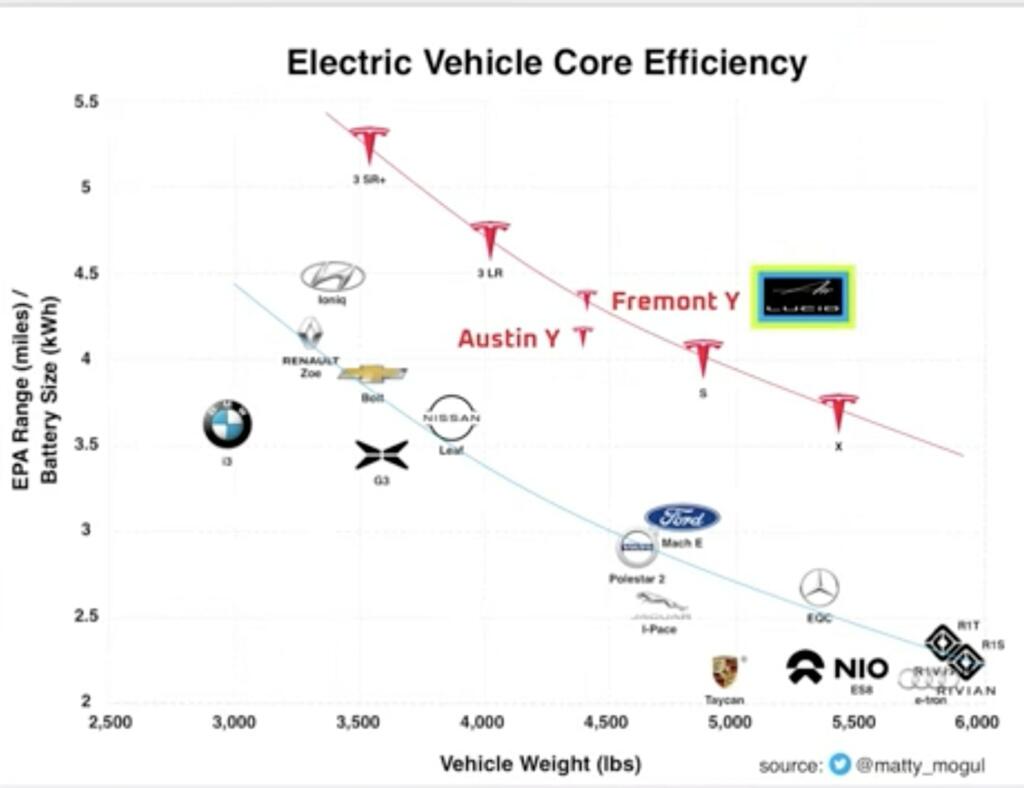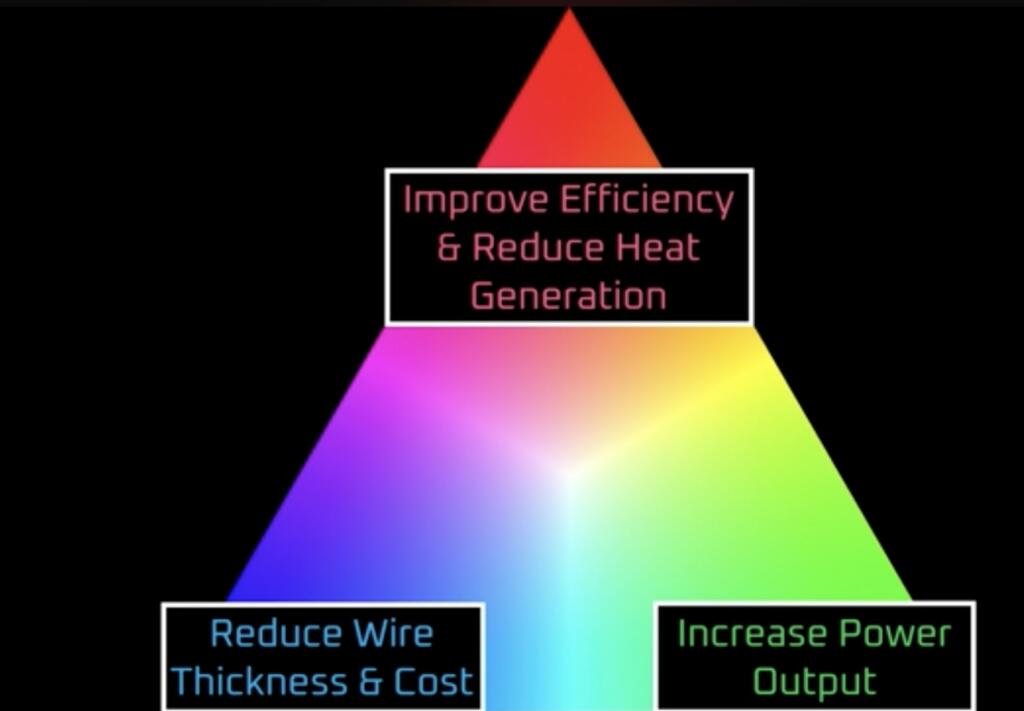Jordan Giesige of the Limiting Factor describes the technological advantages of the Tesla Semi. They have 35% more efficiency in the engines and 20% in the power train over other electric Semis.
The Tesla Semi is about 17% more cost-efficient than diesel semis. This is because of nearly 80% lower fuel costs with efficient electricity.
The Tesla Semi only has about 1.4 tons of lower payload in the US and 0.4 tons of lower payload in Europe versus diesel trucks. The Tesla 914 kWh battery weighs about 5 tons but the fuel tank and other diesel parts in a diesel truck weigh end up with a 2.4-ton weight penalty. US laws permit electric trucks to have an overall weight 2000 lbs over diesel trucks and European laws permit electric trucks to have an overall weight 4000 lbs over diesel trucks.
The engine and power train advantages will transfer to the Cybertruck and other Tesla vehicles.








Brian Wang is a Futurist Thought Leader and a popular Science blogger with 1 million readers per month. His blog Nextbigfuture.com is ranked #1 Science News Blog. It covers many disruptive technology and trends including Space, Robotics, Artificial Intelligence, Medicine, Anti-aging Biotechnology, and Nanotechnology.
Known for identifying cutting edge technologies, he is currently a Co-Founder of a startup and fundraiser for high potential early-stage companies. He is the Head of Research for Allocations for deep technology investments and an Angel Investor at Space Angels.
A frequent speaker at corporations, he has been a TEDx speaker, a Singularity University speaker and guest at numerous interviews for radio and podcasts. He is open to public speaking and advising engagements.


After many Google searches … to confirm some of the author’s basis numbers and statistics, I think it all can be ACCURATELY summed up thus:
Most semi’s average out at 7.5 miles per gallon of diesel. Average load, average number of dry runs (no cargo, running back).
And apparently, from Tesla stats, it takes about 2 kWh of electricity to accomplish the same. Not at all clear whether the dry runs are included or not. But let’s say 2 kWh.
In California, at the moment, diesel runs about $4.90/gallon at the Big Truck discount stops. I know ‘cuz I go by them every day to-and-from work. And, in California, electric power is running about $0.22/kWh if you’re a good person and buy it in the middle of the night with adaptive time-of-day metering.
So… $4.90 divide by 7.5 miles = $0.66 a mile. WITH gov’t roads/transport TAXES
So… $0.22 times 2 kWh/mile = $0.44 per mile. … WITHOUT roadways taxes.
There’s the raw comparative cost difference. In truth, as Brian so adamantly points out, there are also MAINTENANCE costs, costs-of-ownership, costs-of-financing. And windfall profits from government subsidies to be realized for the e-trucks. e-semis.
Still, without all that bullsnot, the little comparison above does capture the essence of the economic argument. IF one pays full price for the energies involved. Diesel, or kilowatt hours.
This is why I say the much ballyhooed electric Semi is really in a precarious position from a competitive perspective … as soon as our ever wakeful government realizes they’re losing billions in roadway tax revenue, and see a fine opportunity to mandate a $0.50/kWh tax upon roadway recharging electricity.
Just saying.
GoatGuy
1.kWhis about 20mpg at full load and it doesn’t seem to be affected by elevation according to Tesla test drive of the semi. it’s fair to assume they followed the speed limits though and drove slower uphill and downhill.
quite an achievement still.
sorry, 1.7kWh/ mile
If I had Elon Money, I simply would have built a truck that truckers themselves would want…
Self driving trailers with slide out engine/battery pods and motor wheels that slide off like tandems is really where this needs to go.
Hire ALL AMERICAN drivers who are also mechanics to service self driving trailers. The spent parts you fix in shops indoors…sliding offending parts off.
The one regional driver is dispatcher, tow-truck driver and mechanic all in one…assigned a sub-fleet in one state. Cross-trained.
In other news, ammonia fuel cell trucks (where the ammonia is cracked into hydrogen) are moving forward:
https://newatlas.com/automotive/amogy-first-ammonia-semi/
They’re a tremendously bad idea along the lines of the Hindenburg zepplin … ammonia (NH3) is a gas at ambient pressure and temperature. It is very much like propane: compressed a bit, and it liquifies. Heat it up and its liquid pressure rises. Like propane.
It is moderately flammable and can be used directly in both piston and turbine engines as a fuel, once the engines are hot. Typically, (and with no small irony), either diesel, propane or natural gas are mixed in during a cold-start, to aid a direct thermal engine’s getting hot enough to take 100% ammonia a few minutes later. The energy density isn’t very high, about half that of propane, kilogram for kilogram.
The PROBLEM however is that unlike butane or propane, ammonia gas is remarkably toxic, even though it is both a ‘sewer gas’ and a ‘manure gas’. We can tolerate a fair amount of ammonia gas for quite a while, and it is definitely unpleasant. But in higher concentrations it is both directly toxic, and a potent lung-degradation toxin.
Now, I’m not advising on whether to burn it, or whether to hydro-reform it to hydrogen gas which can be used in fuel-cell engines, or any other means of turning it from molecular form to motive energy. I’m instead asking you to remember that it is toxic, and under enough pressure at environmentally nominal temperatures to run significant risks of blasting out of a ruptured tank … like propane. And by comparison, propane is tame: Almost as remarkably non-toxic as ammonia is toxic.
Hindenburg. Big honking tanks of compressed ammonia … on wheels … driving in rush-hour traffic, alongside an army of idiots on steroids. Hindenburg.
Hindenburg is the wrong metaphor. The problem that everyone associates with the Hindenburg is flammable gas, and that’s an issue that has been solved decades ago for road transport fuel. Every taxi on the road in my country runs pressurized tanks of LPG and has for decades.
The correct metaphor is more like “asbestos”